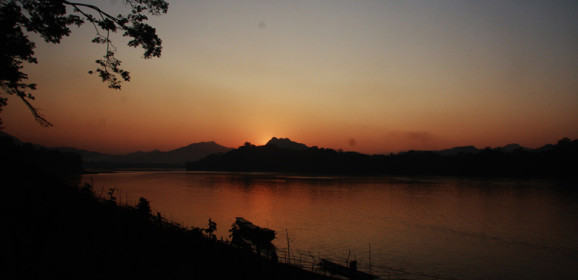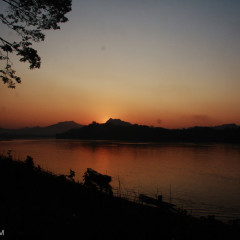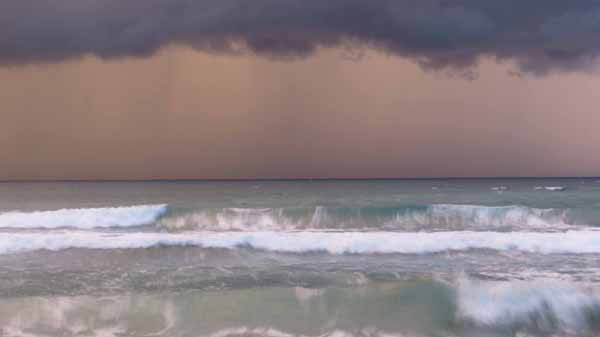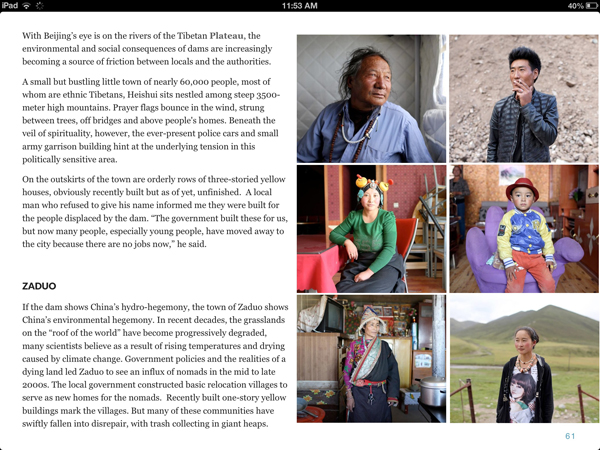The Big Brown Spot: Southeast Asia’s ecological catastrophe (commentary)
Commentary by Ethan Lussky When looking at a satellite image of Southeast Asia, you see white clouds dotting the sky, beautiful shades of blue hugging the coast, and a thick, green forest enveloping the land. Swirls and curves mark the Northern Highlands of Laos and Vietnam—but they are accentuated by swaths of brown. River pathways leading to the ocean—lined with brown. One would expect this tropical region to be covered in a blanket...
A Sparrowhawk’s Lament: How British Breeding Birds of Prey Are Faring– book review
By Gabriel Thoumi Great Britain is known as a nation of birdwatchers – or twitchers – who will travel to great lengths to conserve bird habitat and to observe birds in the wild. Yet in certain circumstances, Great Britain’s birds of prey are persecuted. This cultural dichotomy is explored in wonderful detail in A Sparrowhawk’s Lament: How British Breeding Birds of Prey Are Faring. Great Britain has 15 species of birds of prey,...
Bumble Bees of North America – book review
By Gabriel Thoumi Bumble bees are remarkable. Domesticated bee colonies used for agriculture pollination is a global industry worth at least tens of billions annually. Roughly 20 percent to 30 percent of all food consumed in North America relies upon bumble bee pollination. About 80 percent of European crop species require insect pollination. In parts of China, because of the disappearance of bumble bees, pollination of apple and pear...
Reporter’s Journal: from the fish warehouse
A worker packs Leopard Coral Grouper in a warehouse in Makassar, Indonesia. Indonesia is one of the world’s largest suppliers of live reef fish, mostly to East Asian markets. Though selling live reef fish is legal in Indonesia, many of the fish are caught illegally using cyanide. This photo was taken by Mongabay.org’s Special Reporting Initiatives fellow Melati Kaye, who is reporting on the state of the fishing industry in...
The allure of the Amazon: real or imagined?
Commentary by Nick Werber What is it about the Amazon that fires the imagination? For as long as I can recall it has been a symbol for the Earth as it wants to be; a flourishing paradise perhaps, a place of explosive variegation, the jungle in full bloom. Like the untamed areas outside of the cities in Brave New World, The Heart of Darkness and The Lost World, the jungle has formed an archetype for all that is natural and untouched by...
India plans new railway through protected areas, threatens already-imperiled wildlife
—Special report by Sanjay Gubbi and Shreya Dasgupta— On a winter day in November 2013, a passenger train in the eastern state of West Bengal in India collided with a herd of 40 to 50 elephants, killing five adults and two calves. This was not an isolated event. Such grisly incidences have killed tigers, leopards and several other wildlife species in the past. In fact, train-kills like these have become a routine...
Following giant footsteps: conference on megafauna and ecosystem function
By Emily Read, University of Oxford, UK There has been growing awareness in the world of ecosystem science that large animals (megafauna) play a significant role in how ecosystems function. With their huge range and capacity to eat and process a vast amount of vegetation, creatures such as elephants spread nutrients further than smaller creatures as they wander the land, playing a crucial long-term role in biogeochemical cycling. The...
Photo essay – Is tourism killing Bali?
Photo essay by Jenny Denton Its natural beauty and colorful Hindu culture have drawn visitors to Bali since the 1930s. But more than three decades of rampant development since mass tourism took hold have left the island and its people in a critical state. Bali is struggling with a severe water shortage, huge volumes of waste, a loss of agricultural land and forest, and an influx of foreign investors and workers that threaten to...
Photo essay: saving loggerhead turtles in Greece
Reader contribution by Jean-Baptiste Pouchain Among the shadows of the night, I finally spot them: fresh tracks, coming from the sea and making their way to the obscurity of the sand dunes. Somewhere up there, a sea turtle is looking for an ideal nesting site. Silently, I lie down on the wet ground and start crawling, all my senses on the watch, along the crescent-like marks. I hear her before seeing her: a muffled noise of sand...
Reader Contribution: The ‘One Tree In A Billion’ Project
By Natalie Millar With recent surveys showing the rate of deforestation in the Amazon averaging 2,000 square miles each year, we are at a time where conservation of the rainforest is becoming more and more critical. Threats like logging and illegal gold mining are becoming more prominent, particularly in the Peruvian Amazon, where mercury used in gold mining devastates habitat and pollutes waterway, threatening fauna and local...
Baby giant armadillo’s first photo wins top award
The elusive and unknown giant armadillo (Priodontes maximus) is rarely caught by the lights of a camera, and never before has a baby giant armadillo been captured on film – until now. This unprecedented image has garnered recognition from the 2013 BBC Wildlife Magazine Camera Trap photo competition. The photo, along with another winning image, is the result of the hard work of the Pantanal Giant Armadillo Project. Dr Arnaud...
Comic Series: New forest, not home
By Ariel Mark A comic inspired by Mongabay’s article: Malaysia has the world’s highest deforestation rate, reveals Google forest map
Book Summary: Our Beautiful, Fragile World
By Peter Essick Our Beautiful, Fragile World: The Nature and Environmental Photographs of Peter Essick Our Beautiful, Fragile World features a career-spanning look at the images of photojournalist Peter Essick taken while on assignment for National Geographic magazine. In this book, Essick showcases a diverse series of photographs from some of the most beautiful natural areas in the world and documents major contemporary environmental...
Climate Change in the Cloud Forest
By Larry Kraft This August, my family and I spent a week and a half in Monteverde, Costa Rica. This is the tropics, but at an elevation of 4,500 feet or so. This well-preserved swathe of forest straddles the Continental Divide, which results in clouds and weather coming up from both the Atlantic and Pacific Oceans. The elevation means it’s never very hot, and the tropical latitude means it’s never very cold. The mean temperature...
World Rhino Day: Sunday, September 22nd
Sunday, September 22nd is World Rhino Day 2013. This yearly celebration, started in 2010, hopes to remind the world of the plight of the world’s five remaining species of rhinoceros: the white rhino (Ceratotherium simum), black rhino (Diceros bicornis), Indian rhino (Rhinoceros unicornis), Javan rhino (Rhinoceros sondaicus), and the Sumatran (Dicerorhinus sumatrensis). Today three of the five species are listed Critically...
Technicolor turkey: the exotic cassowary
By Alexander Holmgren The Cassowary is one the worlds most exotic animals. Three species of Cassowary are recognized to this day scattered across the forests of New Guinea and Australia. The Cassowary’s vibrant blue and red hues that run along its neck as well as its elaborate make it truly a sight to behold. Know primarily for their mysterious nature these birds are adept at disappearing through the forest long before humans...
Change on the roof of the world: new book explores climate change and the Tibetan Plateau
Excerpt from the new book Meltdown: China’s Environmental Crisis by Sean Gallagher Adapted By Caroline D’Angelo With soaring mountains and vast grasslands, the Tibetan Plateau covers approximately one quarter of China. The plateau’s glaciers hold the largest store of freshwater on earth outside the North and South Poles. Though remote and sparsely populated, the plateau is of crucial importance to China and its downstream...
Life in the canopy: a Costa Rican treehouse community
By Elizabeth Loudon & Andrew Aldrich Tarzan? Swiss Family Robinson? The immensely popular “Magic Treehouse” book series? It’s no wonder so many kids want treehouses. If you’re an ambitious parent, maybe you’ve tried building one in your backyard. Just a fancy playhouse in a tree right? Think again. Finca Bellavista, a visionary community of full size arboreal homes in the Southern Zone of Costa Rica,...
Endangered Malayan tapir baby born at Minnesota zoo
Last Saturday, a female Malayan tapir (Tapirus indicus) was born at the Minnesota Zoo, the first baby tapir for the zoo in over 20 years. “Malayan Tapirs are an endangered species and every birth is important to the population,” said Tom Ness supervisor of the zoo’s Tropics Trail at the Minnesota Zoo, located in Apple Valley. The only tapir species found outside of Central and South America, Malayan tapirs are...
Capturing Wildlife
By Erika Skogg “You conserve what you know, you don’t conserve what you don’t know.” I thought of this biology quote as I photographed along side Fernando, one of the Humboldt Society’s Ornithologist, as he pulled a shimmering green hummingbird out of the mist net. Strung between skinny silver poles around eight feet tall, the black mesh nets hung through the forest trails. They stood parallel to the forest, winding 100 feet down the...




















